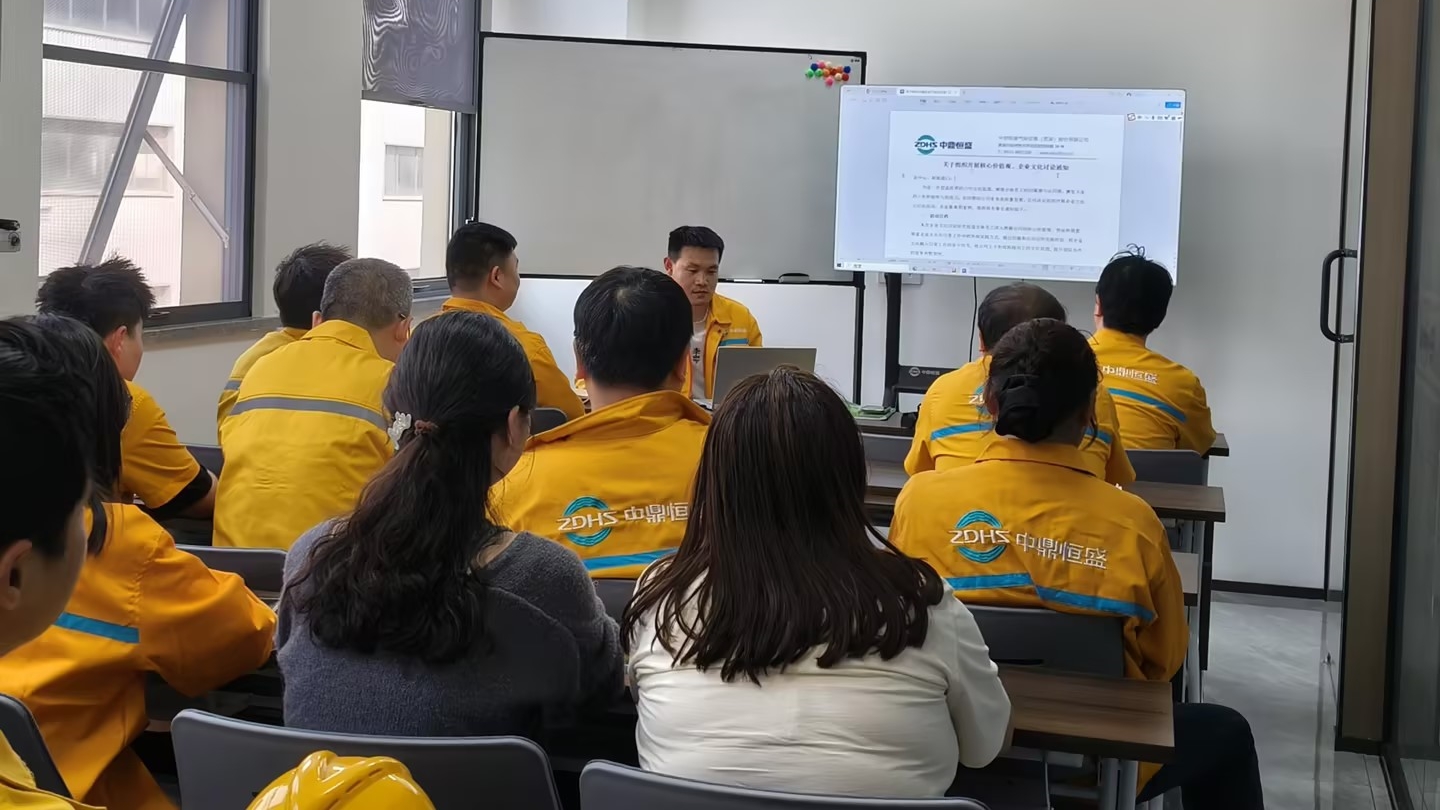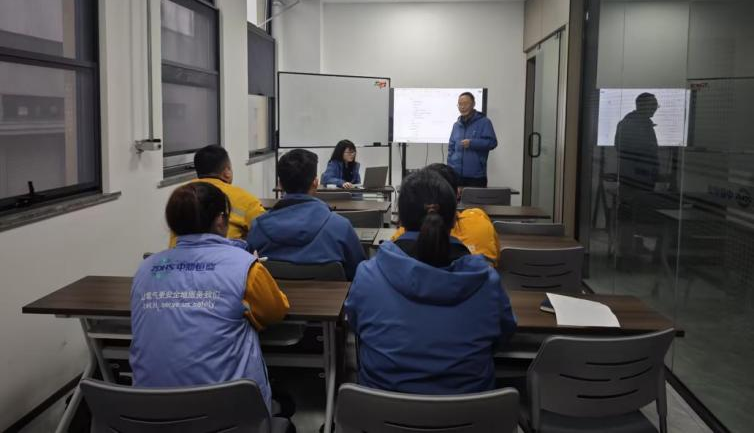United in Purpose, Forged by Culture — A Chronicle of Corporate Culture Implementation Activities
Publishdate:2025-03-28 Source: Views:52
To deepen the implementation of corporate culture and support the achievement of strategic goals, various departments of the company have launched corporate culture learning activities. These activities comprehensively promote cultural integration through three dimensions: "learning, reflection, and action."
Part.1 Technology Center
Deputy General Manager Wang Juntuan held group meetings for the Technology Center staff to study core values and corporate culture, leading the team in in-depth discussions and sharing practical work examples. During the practical discussion session, each group proposed specific measures based on their work: the Technology Development Group emphasized efficient collaboration and decisive execution, sharing experiences on streamlining processes to improve efficiency; the Technical Support Group focused on how to accurately understand customer needs through deep communication. Multiple case studies were shared, including rapid responses to equipment issues for Chongqing customers, completing modifications within a week, proactively sharing thermodynamic knowledge to enhance design capabilities, and cross-departmental collaboration to deliver urgent projects for CNPC. General Manager Wang shared her understanding of the practical significance of corporate culture, stressing through examples that corporate culture reflects employees' work attitudes and that corporate value stems from customer value. Only by deeply understanding needs and pursuing customer satisfaction can mutual success for the company, employees, and customers be achieved.
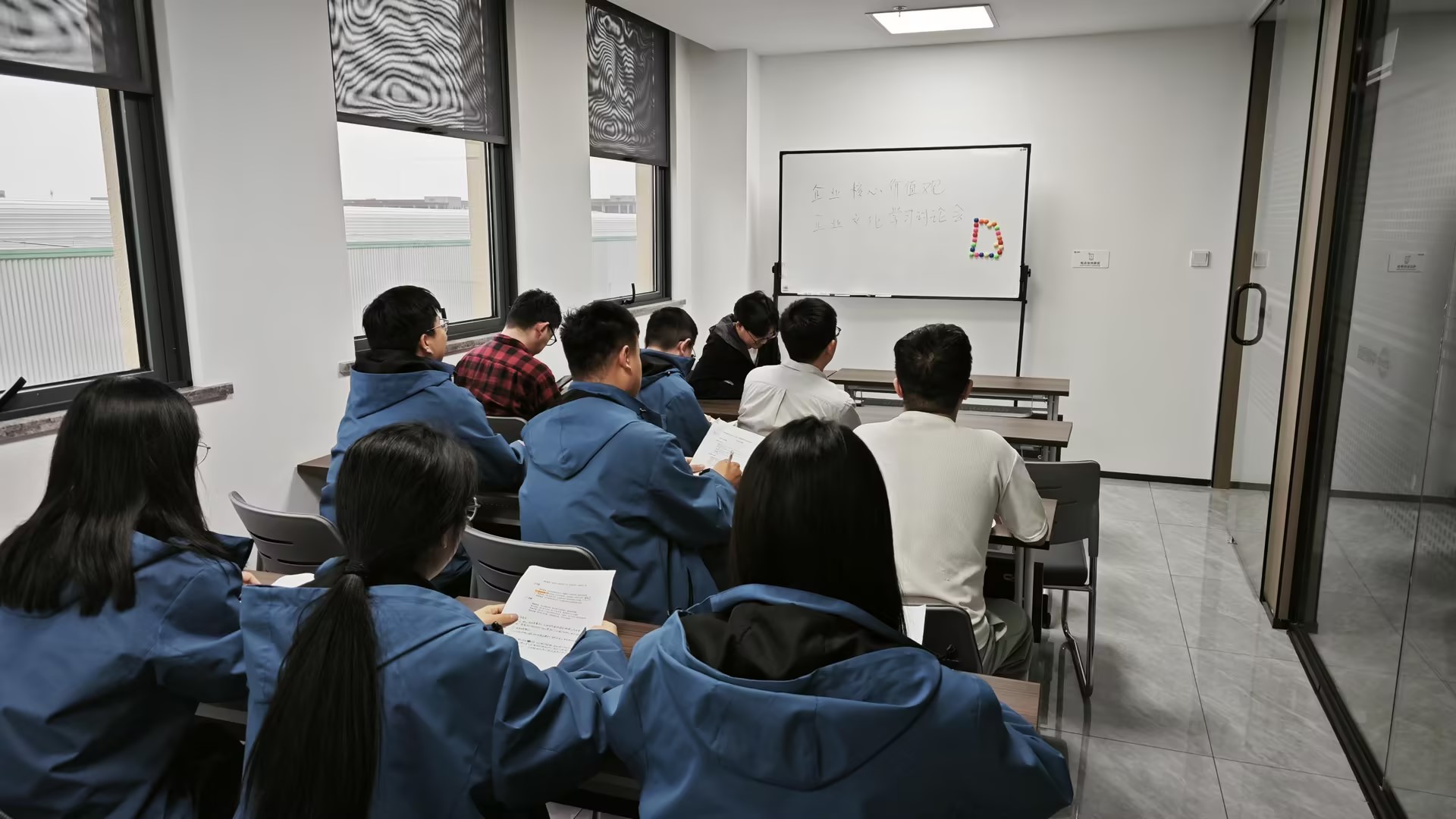
Part.2 Marketing Center
The Marketing Center organized a themed learning session titled "Practicing Corporate Culture, Elevating Service Quality." As the company's primary interface with customers, the marketing team explored how to better embody corporate culture in daily work. During case-sharing sessions, participants shared typical customer service examples. Everyone agreed that marketing personnel's actions represent the company's image and must align with corporate culture to provide professional, efficient service. Deputy General Manager Liu Juan elaborated on the dual significance of corporate culture for work and life, noting that it not only guides work practices but also enriches life wisdom. Through vivid case analyses, she encouraged the team to translate core values like "customer-centricity" into habitual behaviors, extending corporate culture from work to life.
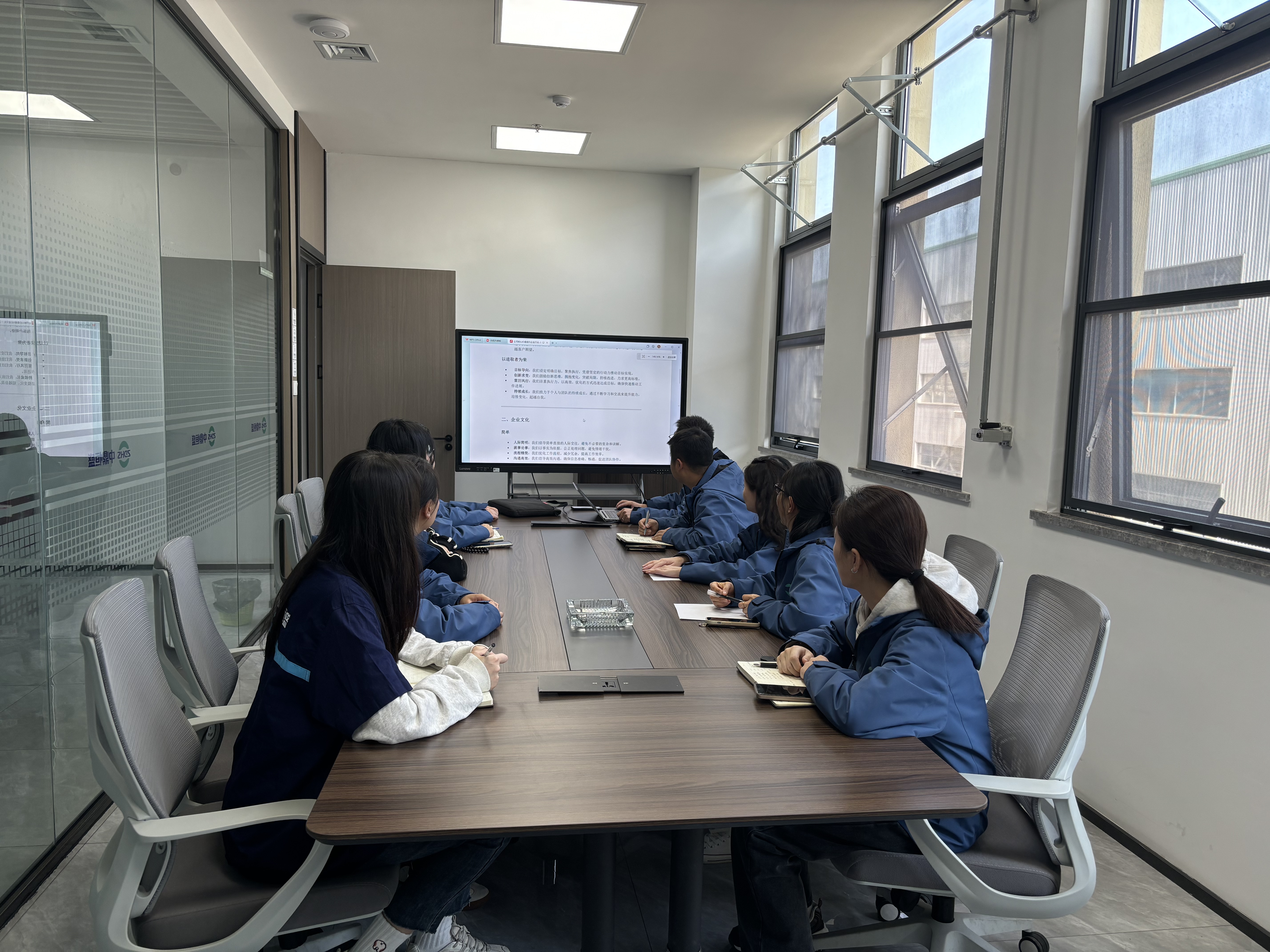
Part.3 Service Center
The Service Center conducted in-depth discussions on corporate culture, reaching the following consensus: In customer service, they emphasized accurately identifying needs and responding promptly, even if immediate solutions were unavailable, by providing clear plans and timelines. They advocated for full lifecycle equipment management, prioritizing problem-solving over personal gains. The team was urged to "strengthen itself first," promoting continuous learning and execution. Work methods included simplifying processes, direct communication, and standardizing service protocols; maintaining a pragmatic approach with issue-tracking systems; fostering openness for knowledge-sharing and cross-department collaboration; and encouraging innovation by learning from other industries' service models. This discussion provided clear directions and action plans for improving service quality and customer satisfaction.
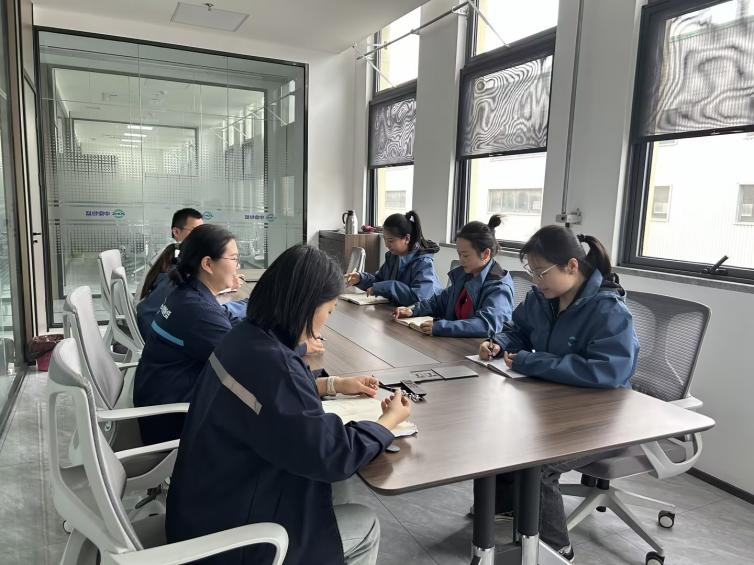
Part.4 Production Center
Corporate culture is the soul and foundation of a company. The Production Center integrated corporate culture into daily management, creating a unique practice model by combining safety training with morning meetings. "Simplicity" did not mean neglecting responsibilities but optimizing processes to eliminate redundancies for greater focus and efficiency; "pragmatism" emphasized tangible actions to boost productivity and quality. Daily morning meetings communicated production goals, quality reminders, and safety protocols to ensure employees started work with clear objectives.
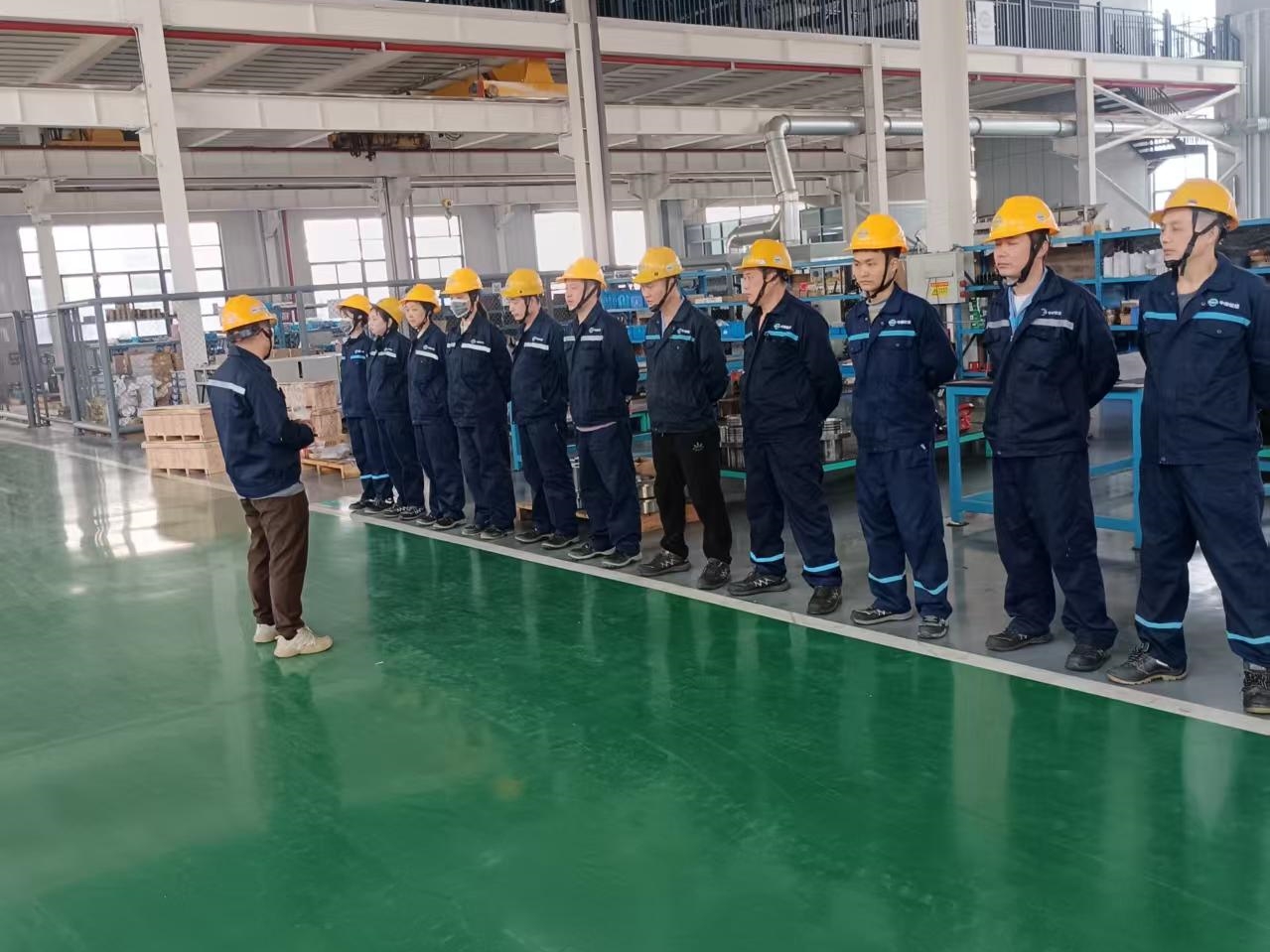
Part.5 Supply Chain Management Department
The Supply Chain Management Department formulated a cultural development plan aligned with core values to build a learning-oriented, innovative, and efficient team. The plan spanned four dimensions:Spiritual: Reinforcing values and recognizing role models.Institutional: Improving management systems and democratic practices.Behavioral: Standardizing professional conduct and organizing team activities.Material: Creating culture walls and enhancing workspaces.
With strong leadership and resource support, the plan aims to enhance team cohesion, innovation, and departmental image, providing robust cultural backing for strategic goals.
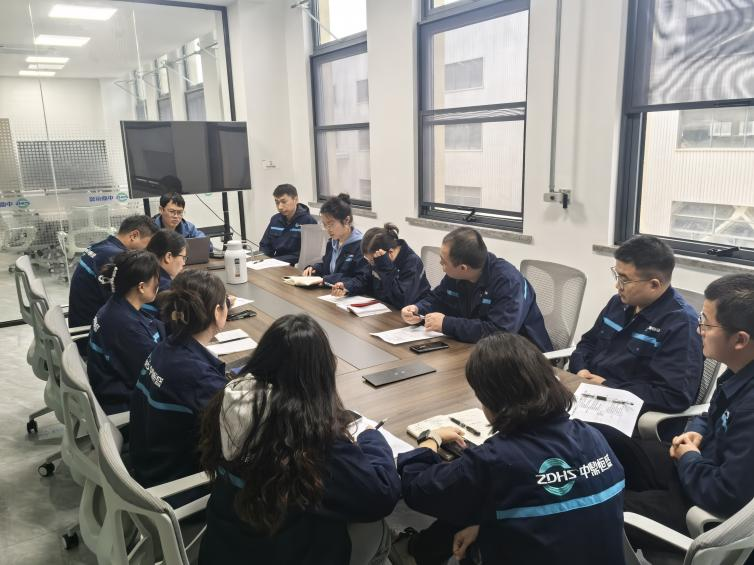
Part.6 Quality Department & Testing Center
The Quality Department and Testing Center organized a corporate culture learning session, where leaders explained core values, mission, and vision, stressing that culture guides behavior and development. Discussions included:The Inspection Group advocated "customer-centric" solutions to exceed expectations.The Quality Assurance Group highlighted cross-department collaboration to break silos.The Testing Center pledged to innovate fearlessly for product upgrades.
Case studies, like the deputy general manager’s rapid resolution of hydrogen station equipment failures, sparked lively discussions.
Part.7 General Manager's Office
The General Manager's Office conducted a corporate culture learning activity through systematic study and case discussions. The session included:In-depth Learning: Weekly meetings to internalize core values.Practical Discussions: Employees shared how their roles embodied values like "customer-centricity," "pragmatism," "simplicity," "innovation," and "openness."Case Sharing: Five real-world examples demonstrated cultural practices in emergency handling, service optimization, and creative design.
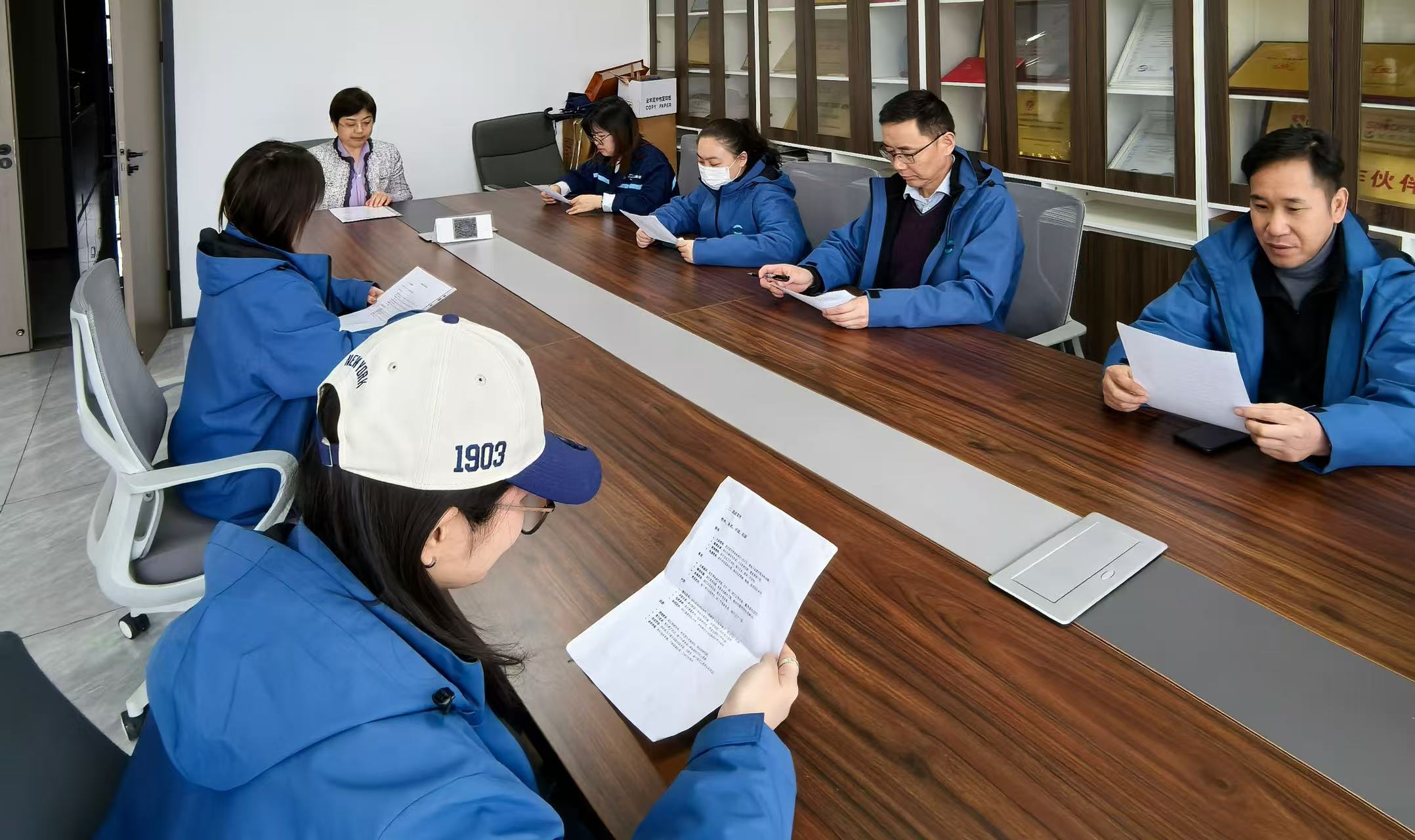
Part.8 Finance Department
Finance Director Shi Yang led a session on core values and corporate culture, analyzing the department’s strengths (pragmatism, accountability) and areas for improvement (innovation, problem-solving). Shi emphasized:Treating internal departments as "customers" and responding proactively.Encouraging innovation to streamline tasks and focus on strategic work.Sharing best practices in regular meetings to foster collective growth.
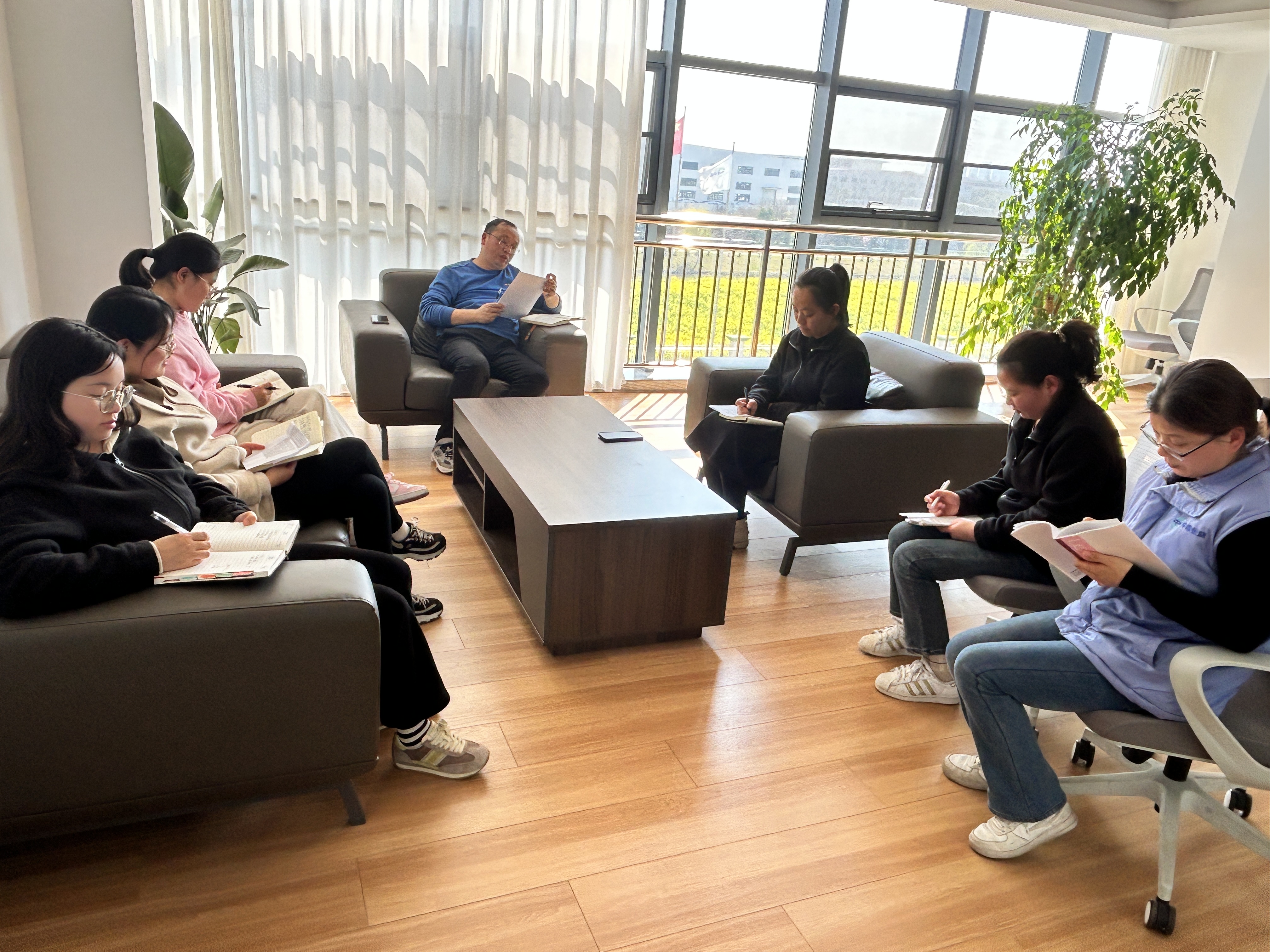
Part.9 Audit Department
Audit Manager Zhan Zhipeng organized a weekly study session, linking corporate culture to practical applications:Optimizing contracts to balance company interests and stakeholder satisfaction.Engaging with frontline operations to align compliance with practical solutions.Personal development plans and regular reviews to drive continuous improvement.
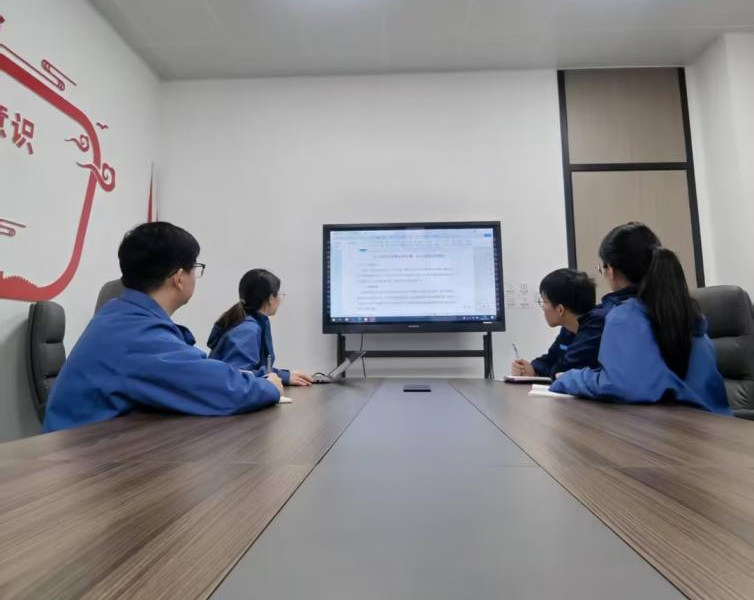
Part.10 Human Resources Department
HR team members shared culture-aligned initiatives:Recruitment: Enhancing candidate experience by understanding needs.Training: Integrating culture into courses.Compensation: Recognizing high performers.Talent Development: Simplifying assessments to focus on capabilities.
HR Manager Ni Qiong emphasized streamlining processes, fostering innovation, and creating an open, inclusive team culture.
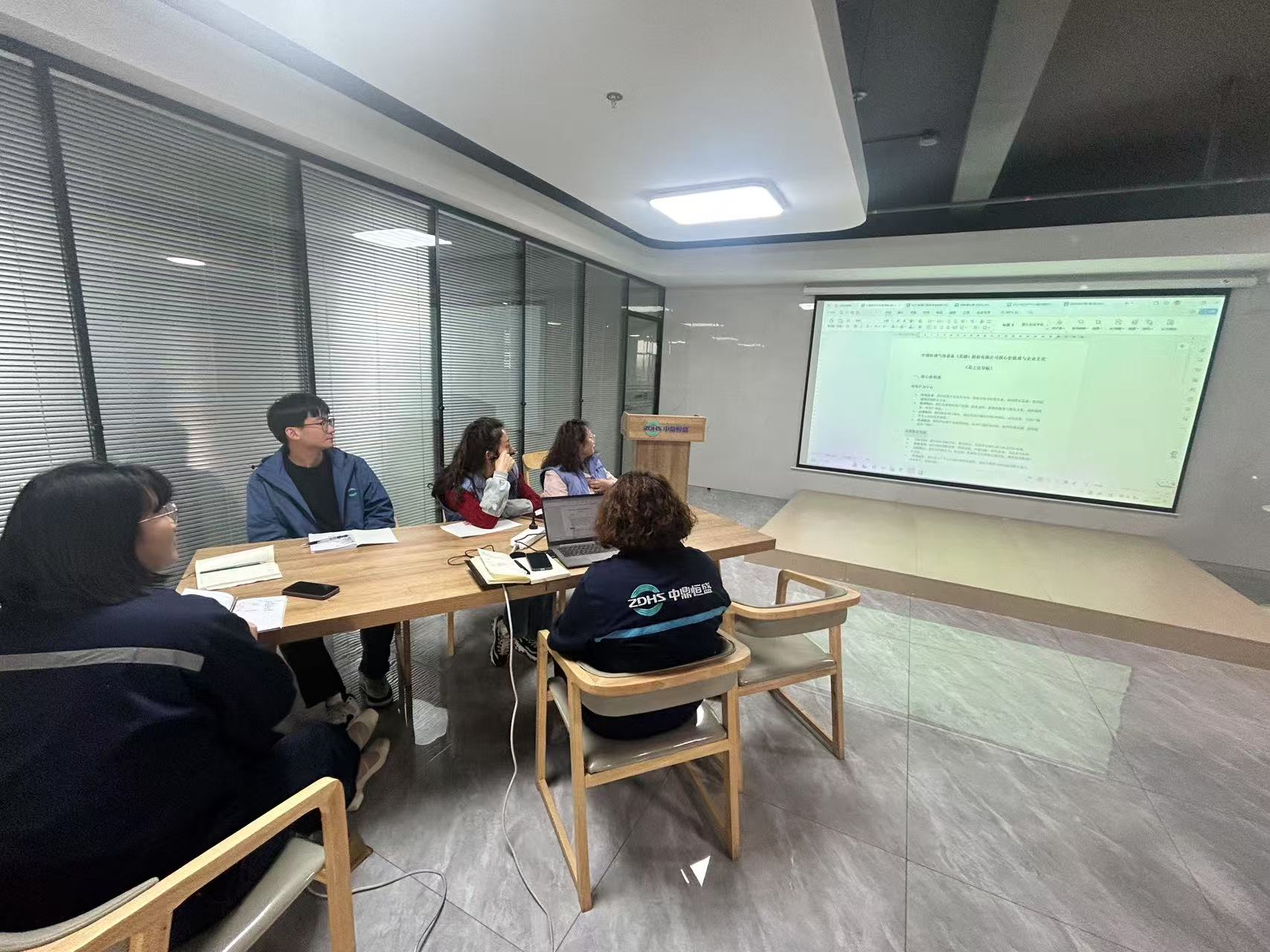
Part.11 Digitalization Department
The Digitalization Department held a culture-themed meeting where employees shared practices:Ma Ji proposed a "learn-practice-embed-improve" cycle to habitualize values.Zhou Dianqing exemplified "customer-centricity" by resolving keyboard issues.Liu Rui highlighted innovation-driven approaches.Yang Gang emphasized data-driven, trustworthy methods.Cao Botao advocated cross-department collaboration.
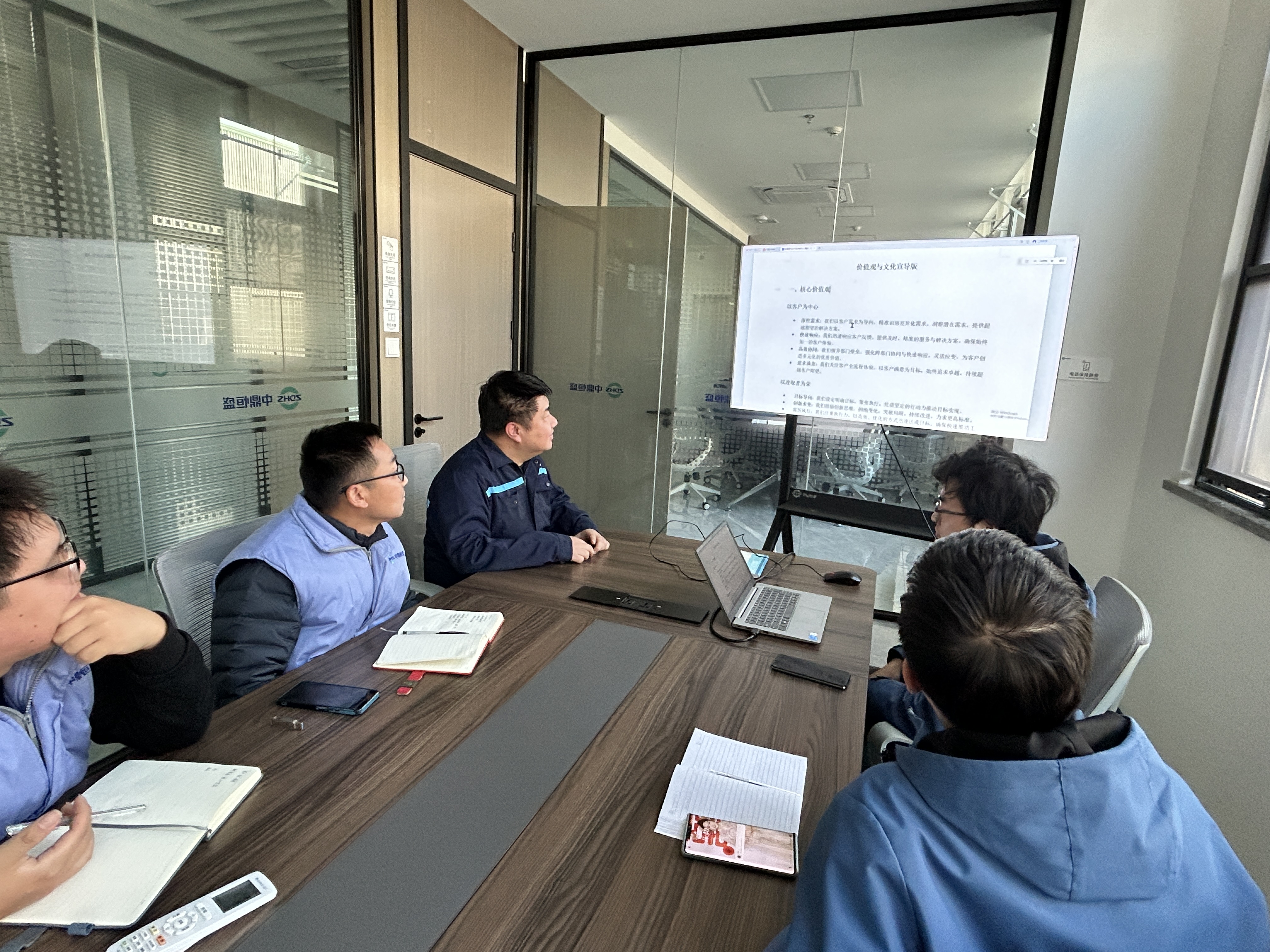
The department committed to embedding culture into digital transformation, ensuring long-term integration into R&D, user service, and management.Let culture be our bond and learning our opportunity to co-write a new chapter in 2025!
To deepen the implementation of corporate culture and support the achievement of strategic goals, various departments of the company have launched corporate culture learning activities. These activities comprehensively promote cultural integration through three dimensions: "learning, reflection, and action."
Part.1 Technology Center
Deputy General Manager Wang Juntuan held group meetings for the Technology Center staff to study core values and corporate culture, leading the team in in-depth discussions and sharing practical work examples. During the practical discussion session, each group proposed specific measures based on their work: the Technology Development Group emphasized efficient collaboration and decisive execution, sharing experiences on streamlining processes to improve efficiency; the Technical Support Group focused on how to accurately understand customer needs through deep communication. Multiple case studies were shared, including rapid responses to equipment issues for Chongqing customers, completing modifications within a week, proactively sharing thermodynamic knowledge to enhance design capabilities, and cross-departmental collaboration to deliver urgent projects for CNPC. General Manager Wang shared her understanding of the practical significance of corporate culture, stressing through examples that corporate culture reflects employees' work attitudes and that corporate value stems from customer value. Only by deeply understanding needs and pursuing customer satisfaction can mutual success for the company, employees, and customers be achieved.

Part.2 Marketing Center
The Marketing Center organized a themed learning session titled "Practicing Corporate Culture, Elevating Service Quality." As the company's primary interface with customers, the marketing team explored how to better embody corporate culture in daily work. During case-sharing sessions, participants shared typical customer service examples. Everyone agreed that marketing personnel's actions represent the company's image and must align with corporate culture to provide professional, efficient service. Deputy General Manager Liu Juan elaborated on the dual significance of corporate culture for work and life, noting that it not only guides work practices but also enriches life wisdom. Through vivid case analyses, she encouraged the team to translate core values like "customer-centricity" into habitual behaviors, extending corporate culture from work to life.

Part.3 Service Center
The Service Center conducted in-depth discussions on corporate culture, reaching the following consensus: In customer service, they emphasized accurately identifying needs and responding promptly, even if immediate solutions were unavailable, by providing clear plans and timelines. They advocated for full lifecycle equipment management, prioritizing problem-solving over personal gains. The team was urged to "strengthen itself first," promoting continuous learning and execution. Work methods included simplifying processes, direct communication, and standardizing service protocols; maintaining a pragmatic approach with issue-tracking systems; fostering openness for knowledge-sharing and cross-department collaboration; and encouraging innovation by learning from other industries' service models. This discussion provided clear directions and action plans for improving service quality and customer satisfaction.

Part.4 Production Center
Corporate culture is the soul and foundation of a company. The Production Center integrated corporate culture into daily management, creating a unique practice model by combining safety training with morning meetings. "Simplicity" did not mean neglecting responsibilities but optimizing processes to eliminate redundancies for greater focus and efficiency; "pragmatism" emphasized tangible actions to boost productivity and quality. Daily morning meetings communicated production goals, quality reminders, and safety protocols to ensure employees started work with clear objectives.

Part.5 Supply Chain Management Department
The Supply Chain Management Department formulated a cultural development plan aligned with core values to build a learning-oriented, innovative, and efficient team. The plan spanned four dimensions:Spiritual: Reinforcing values and recognizing role models.Institutional: Improving management systems and democratic practices.Behavioral: Standardizing professional conduct and organizing team activities.Material: Creating culture walls and enhancing workspaces.
With strong leadership and resource support, the plan aims to enhance team cohesion, innovation, and departmental image, providing robust cultural backing for strategic goals.

Part.6 Quality Department & Testing Center
The Quality Department and Testing Center organized a corporate culture learning session, where leaders explained core values, mission, and vision, stressing that culture guides behavior and development. Discussions included:The Inspection Group advocated "customer-centric" solutions to exceed expectations.The Quality Assurance Group highlighted cross-department collaboration to break silos.The Testing Center pledged to innovate fearlessly for product upgrades.
Case studies, like the deputy general manager’s rapid resolution of hydrogen station equipment failures, sparked lively discussions.
Part.7 General Manager's Office
The General Manager's Office conducted a corporate culture learning activity through systematic study and case discussions. The session included:In-depth Learning: Weekly meetings to internalize core values.Practical Discussions: Employees shared how their roles embodied values like "customer-centricity," "pragmatism," "simplicity," "innovation," and "openness."Case Sharing: Five real-world examples demonstrated cultural practices in emergency handling, service optimization, and creative design.

Part.8 Finance Department
Finance Director Shi Yang led a session on core values and corporate culture, analyzing the department’s strengths (pragmatism, accountability) and areas for improvement (innovation, problem-solving). Shi emphasized:Treating internal departments as "customers" and responding proactively.Encouraging innovation to streamline tasks and focus on strategic work.Sharing best practices in regular meetings to foster collective growth.

Part.9 Audit Department
Audit Manager Zhan Zhipeng organized a weekly study session, linking corporate culture to practical applications:Optimizing contracts to balance company interests and stakeholder satisfaction.Engaging with frontline operations to align compliance with practical solutions.Personal development plans and regular reviews to drive continuous improvement.

Part.10 Human Resources Department
HR team members shared culture-aligned initiatives:Recruitment: Enhancing candidate experience by understanding needs.Training: Integrating culture into courses.Compensation: Recognizing high performers.Talent Development: Simplifying assessments to focus on capabilities.
HR Manager Ni Qiong emphasized streamlining processes, fostering innovation, and creating an open, inclusive team culture.

Part.11 Digitalization Department
The Digitalization Department held a culture-themed meeting where employees shared practices:Ma Ji proposed a "learn-practice-embed-improve" cycle to habitualize values.Zhou Dianqing exemplified "customer-centricity" by resolving keyboard issues.Liu Rui highlighted innovation-driven approaches.Yang Gang emphasized data-driven, trustworthy methods.Cao Botao advocated cross-department collaboration.

The department committed to embedding culture into digital transformation, ensuring long-term integration into R&D, user service, and management.Let culture be our bond and learning our opportunity to co-write a new chapter in 2025!




